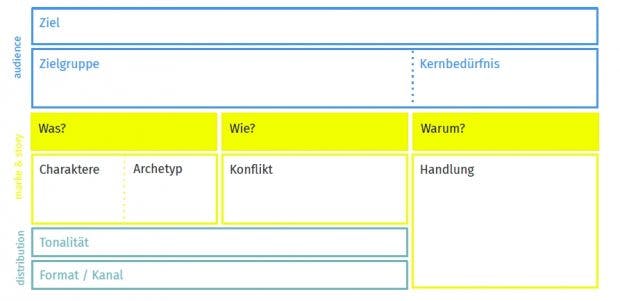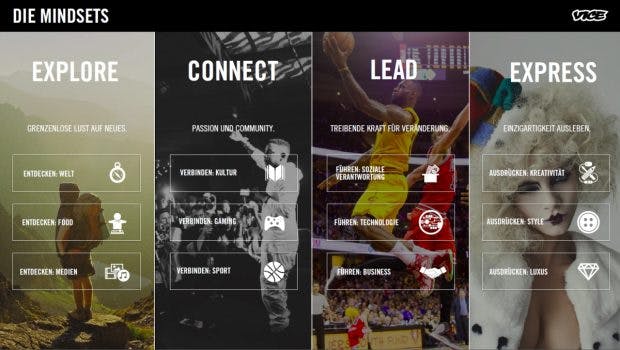With a good core story, daily storytelling via marketing channels and social media not only becomes easier, it also remains congruent with the company’s goals.
In times of social media, product, services and communication are merging more and more. The forefathers of content marketing saw the discipline as a kind of Trojan horse. You create content that people find exciting, and you hope that far-fetched company messages can be conveyed in this way. “Three companies did it differently,” says Susanne Harnisch, the founder of XO-Projects, an agency specializing in content marketing.
We’re talking about Guinness, Dr. Oetker and Michelin. The brewery put conviviality and events at the center of its brand strategy and the hunt for absurd records fits perfectly into the picture. Dr. Oetker recognized the value of “assisted” cooking at an early stage, as it allows even less well-trained cooks to produce exciting dishes with little effort. The public recipe system for Oetker products was born. And tire manufacturer Michelin soberly calculated that the more car owners are on the road, the more tires are bought. So they were sent to the best starred restaurants.
Framework first
It is not that easy to find your own core story and derive appropriate and relevant communication from it. This can easily be observed with FMCG products , which offer few specific product advantages over the competition. There is not much communication left than the creation of (sometimes artificial) worlds of emotions.
But we don’t give up that easily. There are basically two important levels of communication. The content either helps in some way or it entertains. Both levels can be considered quite broad. Content is also helpful, for example, if it makes the user smarter or more informed. Nerd content can be entertaining in this target group. Everyone else may find photos of asphalt milling machines at work on motorways (google Wirtgen) rather boring.
However, what underlies any professionally operated content marketing is a framework. This maps the structure of the processes and above all ensures that everyone involved is talking about the same thing.
Harnisch uses the storytelling canvas in her agency. The work always begins with the goal setting. This not only applies to overarching meta-goals such as “more traffic for the website”, but is also deepened for each campaign in the most concrete possible goals such as:
- Deepen customer relationships
- Deepen the experience of the company or product
- Gain new clients
- And many more goals

With the help of this simple template, content marketing can be structured in a targeted manner.
The core of the exercise lies in the following sentence: “For whom do we do what, to achieve what and why?”.
Target groups are more than demographics
The second step is to describe the addressee as precisely as possible. Classic demographic characteristics such as age, gender or place of residence are a start, but fall short in the long run. “In Generation Z we find extremely different types,” says Christian von den Brincken from the marketing giant Ströer. For example, he sees many people with a high need for security in this young target group.
The comparison of Prince Charles and Ozzy Osbourne has already achieved a certain cult status in marketing. Both have very similar demographic characteristics, but are unlikely to be enthusiastic about the same stories.

So you have to go deeper when describing the target group. The living environment of the potential addressees can be mapped with personas , for example . This is also a target group description, but more according to types than demographics. Is a person extroverted or not? Is he ready for risk or rather cautious? The persona questionnaire depicts the target group’s environment. Most companies define between five and ten archetypes that they address. The US media company Vice has defined such types for editors so that they know who they are actually writing for.

The media company Vice gives its editors a clear idea of who they are writing for.
Needs, fears, pain points
If you combine the persona description with your own industry or even the product, it quickly becomes clear where there are stories to be told. Just showing problem scenarios creates a direct connection to the target group, for example with a manager who has to travel by train at short notice, but has never booked a ticket himself, because otherwise the secretary would do it. If that were a scenario for content marketing at the railways, one could show that he can relax and buy a ticket from the conductor on the train. It will be more expensive, but – according to the persona description – that is not a problem for him.
How do you get these insights? Content marketing professional Harnisch describes four scenarios:
- Questions : Classic market research
- Counting : Analytics
- Observe : It used to focus on laboratory tests with subjects. This is now also possible via remote software, and specialized online services also provide the software and access to target groups.
Social media analytics is a mix of counting and observing. The automatic evaluation of comments, ratings and forums can show which problems certain user groups have with an offer or what they find particularly good. - Interpret : This discipline naturally transcends the survey methods mentioned above. However, it also allows external experts who have experience in a specific segment to be called in.
An interesting tool, especially for workshops, is mapping the customer journey . Where does a user take advantage of an offer, where does the need arise, how is his interest sharpened and what may decide the purchase. Not to forget that the journey continues afterwards. Aftersales is often misunderstood as a service function. Today we know that customers like to know beforehand what will happen afterwards. So part of this communication becomes a marketing issue.
An example: If an app says that it is particularly user-friendly and easy to use, this can also be illustrated with the tutorials, which are typically only displayed after download and installation. Why not show the real operation of the software instead of stylized graphics.
The story
Harnisch introduces the so-called Golden Circle here. Once you have found the content of the communication by analyzing the pain points, the question arises as to which means and how to communicate it. So in the middle of the circles is the why, then the how and then the concrete what. It’s not just about the story itself, but also about choosing the right format (video or text) and then choosing the optimal channel for it.
And how do you tell a good story?
One possible pattern is the hero’s journey. This is a classic concept that is taught at every script school. The hero is initially in his familiar environment, then comes a challenge. At first he refuses, has doubts, but then a mentor appears and advises him. He sets out, has a lot of minor skirmishes and setbacks, until he finally defeats the dragon in the decisive battle and returns home with the “Elixir of Wisdom” and tells his loved ones about it.

The UX expert Enes Ünal removed the Airbnb marketing from the concept of the hero’s journey.
This is how it may sound like at first glance, it is quite simple to transfer to purchasing processes and to fill it with life. Airbnb bases its communication on this model. The “mentor” appears, for example, in the form of reviews from previous customers who advise booking a certain accommodation.
The story construct of the hero’s journey doesn’t just work across an entire customer journey. Even within the individual piece of content, a cognitive dissonance, i.e. a perceived contradiction, is a good introduction to attracting attention. The approach is similar to the hero’s “refusal”.
Susanne Harnisch lists seven archetypal narrative constructs, which in this and similar form almost always make up the backbone of good stories:
- Overcoming the Monster – Harry Potter
- From dishwasher to millionaire (Rags to Riches) – Cinderella
- The Quest – Lord of the Rings
- Voyage and Return – Alice in Wonderland
- The comedy, e.g. mix-up (comedy) – some like it hot
- The Tragedy – Romeo and Juliet, Titanic
- The Rebirth – The Frog King, Beauty and the Beast
Conclusion
The development of a content strategy based on the content requires more effort at the beginning than writing “from the gut”. However, in permanent operation and especially with changing teams, such a construct proves to be helpful and relieving. And when the core story is in place, people can also be searched for in personnel planning who represent this story and are thus intrinsically motivated and in line with the company’s goals.
